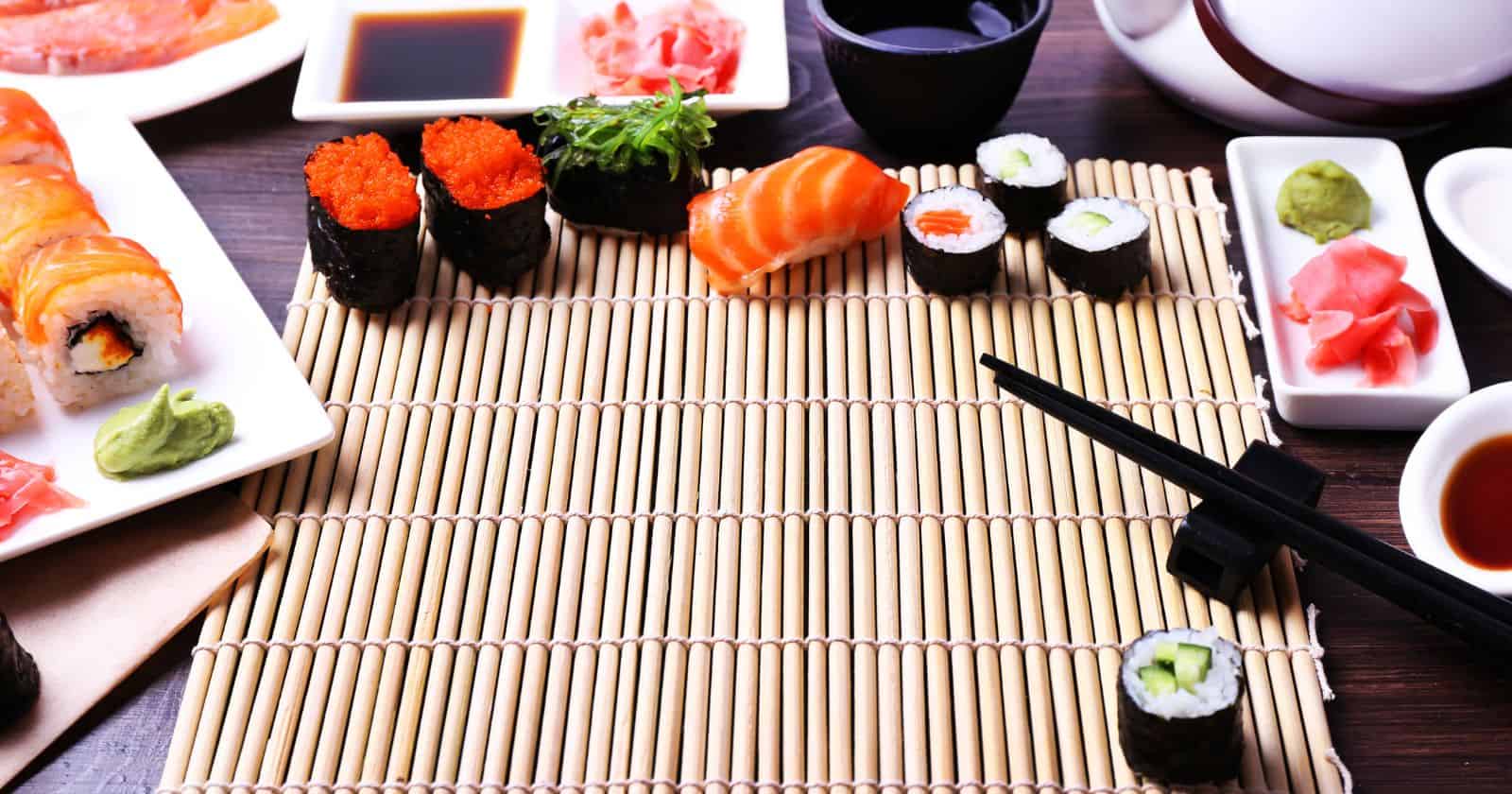Do you love making sushi at home? Then you gotta keep your sushi mat clean! A dirty mat can ruin your sushi. Not sure how to clean it? No worries – we’ve got your back.
Here’s the quick lowdown on getting your sushi mat squeaky clean:
- Wipe it down with a warm, wet cloth
- Scrub it gently with some soap
- Rinse it off under warm water
- Air dry – don’t use a towel!
The trick is using warm water, mild soap and soft brushing. For super dirty mats, soak in warm, soapy water first.
Vinegar solution and dishcloths work too. Just avoid harsh scrubbing – it can damage the mat.
Keeping your sushi mat clean takes little effort. And it makes rolling sushi so much easier and tastier!
Want the full scoop on sushi mat cleaning? Keep reading! We’ll walk you through the easy process step-by-step.
Give It a Quick Wipe Down
For basic cleaning, a quick wipe down is all you need:
- Rinse your sushi mat under warm water. This softens any stuck bits of rice or fish.
- Wet a cloth with warm water. A microfiber cloth works great since it’s gentle.
- Wipe down your mat thoroughly on both sides. Apply light pressure to lift debris.
- Ensure no grains of rice or residue remain. Change cloths if needed.
- Air dry your mat. Don’t use a towel – trapped moisture can breed bacteria.
This speedy wipe down cleans most mess off your mat between sushi rolls. It takes just a minute or two.
Give It a Good Scrub
For a deeper clean, you’ll need to scrub your sushi mat:
- Fill a bowl with warm water. Add a drop or two of mild soap like dish soap.
- Dip your mat in the soapy water. Let it soak for 2-3 minutes to loosen dried bits.
- Scrub gently with a soft brush or cloth. Apply light pressure only.
- Rinse thoroughly until water runs clear. Remove all soap residue.
- Air dry as before. Lay flat so both sides dry evenly.
The warm, soapy water helps lift clingy rice grains. And gentle scrubbing removes stubborn spots without damaging the mat.
Soak Away Serious Grime
If your sushi mat is really dirty, a good soak is in order:
- Fill a bowl or basin with warm soapy water. Use a few tablespoons of mild soap.
- Submerge your sushi mat in the soapy bath. Let it soak for 10-15 minutes.
- The long soak allows the soap to penetrate and lift dried-on food particles.
- Scrub with a soft brush all over the mat, front and back. Avoid hard scrubbing.
- Rinse very thoroughly. Keep rinsing until all soap is gone.
- Lay flat on a clean towel to air dry fully – swap towels if needed.
This deep clean tackles seriously stubborn gunk on your mat. Just be gentle when scrubbing to avoid tearing the mat fibers.
Try a Vinegar Solution
For super stubborn smells or stains on a bamboo mat, vinegar is your secret cleaning weapon:
- Mix 1 part vinegar with 2 parts hot water. You can use rice vinegar or apple cider vinegar.
- Soak mat in the vinegar solution for 20-30 minutes.
- Vinegar is a natural deodorizer and stain remover. It kills bacteria too.
- If needed, gently scrub with a soft cloth after soaking.
- Rinse extremely well until vinegar smell is gone.
- Air dry fully before using or storing the mat.
The acetic acid in vinegar breaks down tough gunk. Just avoid soaking too long, as it can damage the bamboo fibers.
Air Dry Properly
However you clean your sushi mat, proper drying is a must:
- Always air dry your mat – never use a towel.
- Lay flat on a clean surface. Allow both sides to dry fully.
- Change surfaces if needed if one side stays wet.
- Don’t store until completely dry to avoid mold.
- Rotate occasionally so both sides dry evenly.
If moisture stays trapped in your rolled up mat, it can breed mold and bacteria. Proper air drying prevents this.
Don’t Use Harsh Chemicals
When cleaning your sushi mat, avoid:
- Harsh detergents – they can strip mat fibers.
- Bleach – it’s too abrasive for delicate materials.
- Harsh scrub brushes – they can tear mats apart.
- The dishwasher – high heat damages most mats.
Stick to warm water, mild soap and soft scrubbing. This safely cleans mats without harming them.
Signs Your Mat Needs Replacing
Over time, even with good care, sushi mats wear out. Watch for these signs yours has expired:
- Tears, holes or unraveling on the surface
- Frayed, broken or loose bamboo slats
- Strong food odors that won’t go away
- Stains that remain after cleaning
- Mold or mildew that keeps coming back
- Loose or falling apart strands of fabric
For food safety, replace your mat if it shows these issues. Basic mats are inexpensive to replace.
Storing Your Mat Properly
To maximize your mat’s lifespan:
- Wash and dry fully before storing.
- Roll loosely – don’t wrap tightly. This can warp shape.
- Store in a dry place, not exposed to moisture.
- Avoid direct sunlight which can fade colors.
- Hang up or store flat – don’t fold or crease.
Proper storage protects your mat in between uses. A mat that stays dry and holds its shape lasts much longer.
Mat Materials Matter
Sushi mats come in a range of materials. Each has pros and cons:
- Plastic – very affordable but less grip. Can harbor odors.
- Bamboo – naturally antibacterial with good grip. Prone to staining.
- Fabric – gentle grip and easy to clean. Can retain moisture.
- Silicone – non-porous for easy cleaning. Limited absorbency.
Consider your budget, cleaning style and mat priorities when choosing a material.
Key Tips for Keeping Mats Clean
Let’s review the key tips for cleaning sushi mats:
- Use warm water, mild soap and soft scrubbing
- Gently loosen bits of rice and gunk – don’t scrape vigorously
- Rinse very thoroughly after washing
- Always air dry fully – never store damp
- Replace mats with tears, stains or odors
- Store mats loosely rolled or hanging to maintain shape
- Clean after each use for longest lifespan
Keeping your sushi mat fresh speeds up rolling and improves taste. Follow these tips for sushi success!





